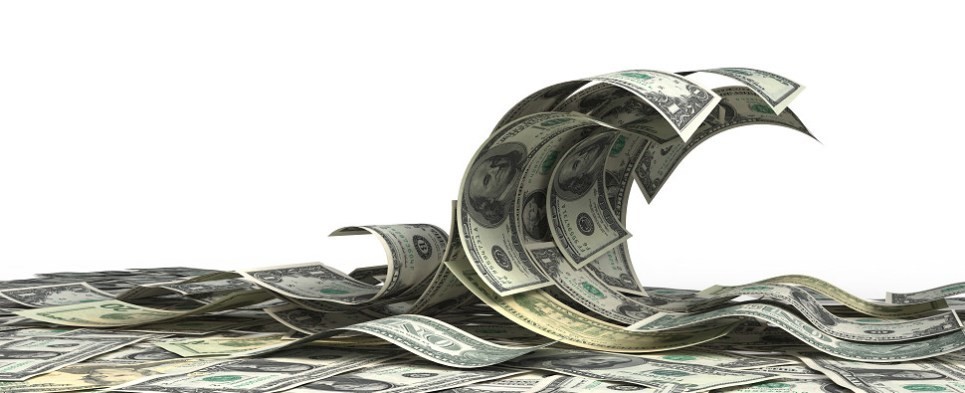The euro is facing increasing pressure from Mr Trump's tariff plans, the divergence in monetary policy between the Fed and the ECB, and geopolitical uncertainty.
 |
| The US dollar rose sharply in the trading session on January 10, after data showed that the world's largest economy created more jobs than expected last month. (Source: Globaltrademag) |
The dollar rose sharply on Friday after data showed the world’s largest economy created more jobs than expected last month, bolstering expectations that the Federal Reserve will pause its rate-cutting cycle at its January 2025 policy meeting.
The dollar's rally began after the US Department of Labor reported that the US economy added 256,000 jobs in December 2024, much higher than economists' forecast of 160,000 jobs. However, November's job gain was revised down to 212,000.
Meanwhile, the unemployment rate fell to 4.1%, compared with a forecast of 4.2%, and average hourly earnings rose 0.3% last month after rising 0.4% in November. Year-on-year, wages rose 3.9% in December 2024, after rising 4.0% in November.
Jane Foley, head of foreign exchange strategy at Rabobank in London, said the December jobs data clearly shows that the Fed does not need to cut interest rates urgently. Rabobank said the Fed will only cut interest rates once in 2025. However, she said that if US President-elect Donald Trump quickly implements his policies, the Fed will not cut interest rates again.
During his campaign, Mr. Trump pledged to impose tariffs, cut taxes and carry out mass deportations of undocumented immigrants, all of which are expected to cause inflation to rise again.
According to LSEG estimates, after the above US employment data, the market is assuming that the Fed will definitely pause its monetary policy easing cycle at this month's meeting. The market also predicts that the Fed will only cut interest rates slightly in 2025.
The greenback also extended gains after a University of Michigan consumer sentiment report showed that expectations for US consumer inflation for next year and beyond jumped in January.
The dollar briefly rose to its highest level against the Japanese yen since July after the data. The dollar has gained against the yen for five of the past six weeks.
Meanwhile, the US dollar index, which measures the greenback’s strength against a basket of major currencies, rose to its highest level since November 2022, marking its sixth consecutive weekly gain. This is the longest winning streak since 2023.
On the other hand, the euro has fallen to its lowest level against the dollar since October 2022. A Reuters poll this week showed that many foreign exchange experts expect the euro to reach parity with the dollar by 2025.
The euro fell below 1.03 euros to the dollar on Tuesday, hitting its lowest level since October 2022 and marking the second consecutive weekly decline for the euro. This development pushed the euro close to parity with the dollar, an important psychological milestone.
This price level is similar to the summer of 2022, when the Euro not only touched but fell below parity with the USD.
At that time, the Fed's aggressive rate hikes, the European Central Bank's (ECB) delayed response, and the European natural gas crisis created a "perfect storm" for the common currency. A "perfect storm" is an economic term that describes a convergence of the worst things happening at the same time.
Now, the euro is facing increasing pressure from Mr Trump's tariff plans, divergence in monetary policy between the Fed and ECB, and geopolitical uncertainty.
Although the euro has weakened significantly since Donald Trump's victory in the US presidential election in November 2024, the full impact of the economic policies of the Trump administration has yet to be seen.
As the market cautiously watches policy announcements from the Trump administration and the next direction from central banks, the possibility of the Euro reaching parity with the USD in the first half of 2025 is entirely possible.
Whether the euro continues to hit new lows will depend on the extent of US policy changes and Europe's ability to cope with these impacts.
In other currencies, the pound fell to its lowest since November 2023 against the dollar, continuing a decline in the previous session along with a sell-off in British government bonds on concerns about the country's public finances.
Source: https://baoquocte.vn/dong-usd-co-the-dat-muc-ngang-gia-voi-euro-trong-nam-2025-300482.html



































































































Comment (0)